Affiliate links on Android Authority may earn us a commission. Learn more.
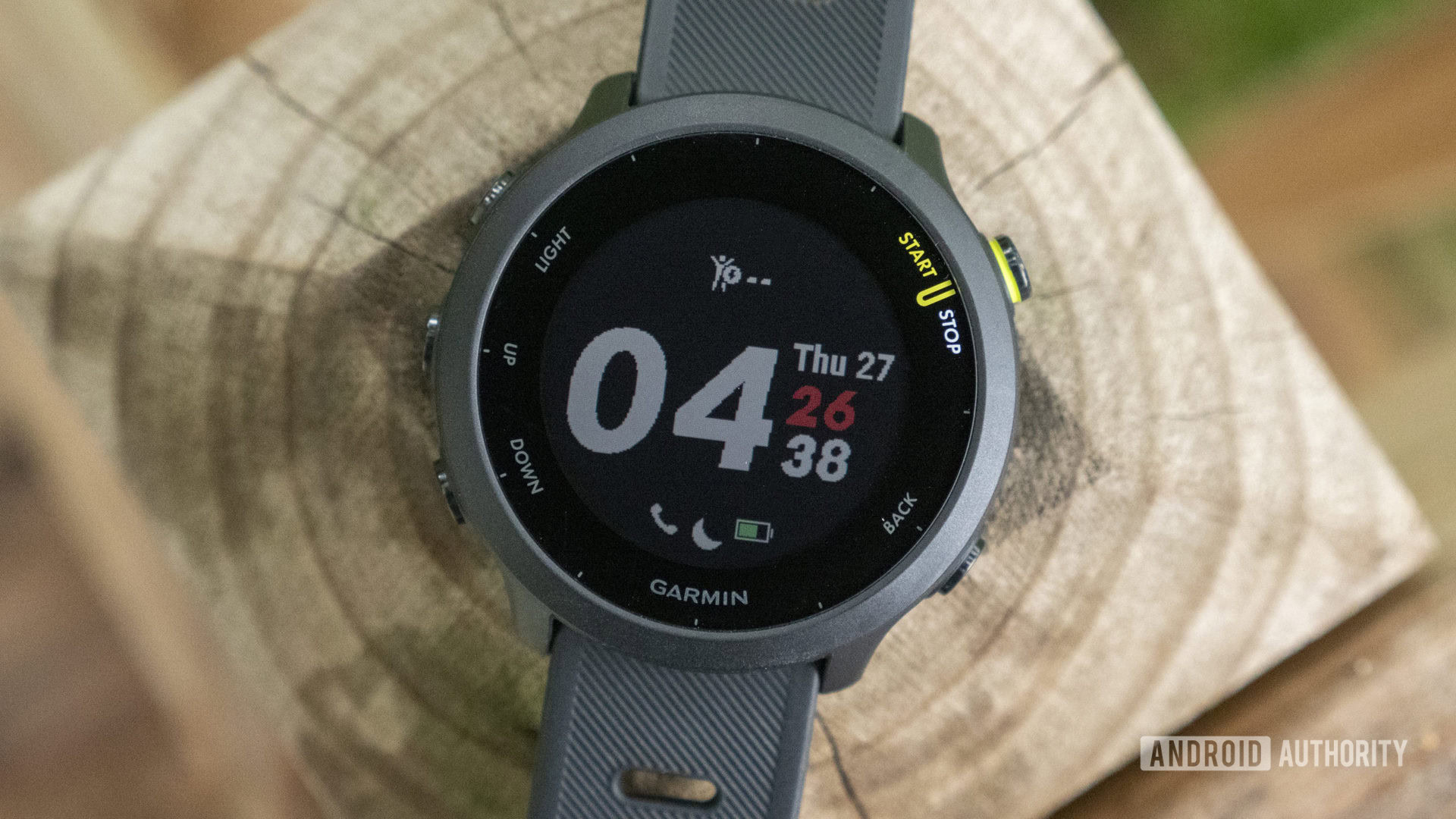

Garmin Forerunner 55 review: Well-rounded and affordable
March 16, 2023

Garmin Forerunner 55
MSRP:
What we like
What we don't like

Garmin Forerunner 55
Garmin has been a staple in the low-end running watch market for a long time. The uber-popular Forerunner 35 from 2016 can still be found on wrists today. But there’s new competition in that sector, and Garmin needs to keep improving its tried-and-true formula, so it doesn’t lose out to smaller players like Coros.
Enter: the Garmin Forerunner 55. This budget-friendly running watch builds on 2019’s Forerunner 45 in a few important ways. Read our full Garmin Forerunner 55 review to see just how this new running wearable stacks up against the heated competition.
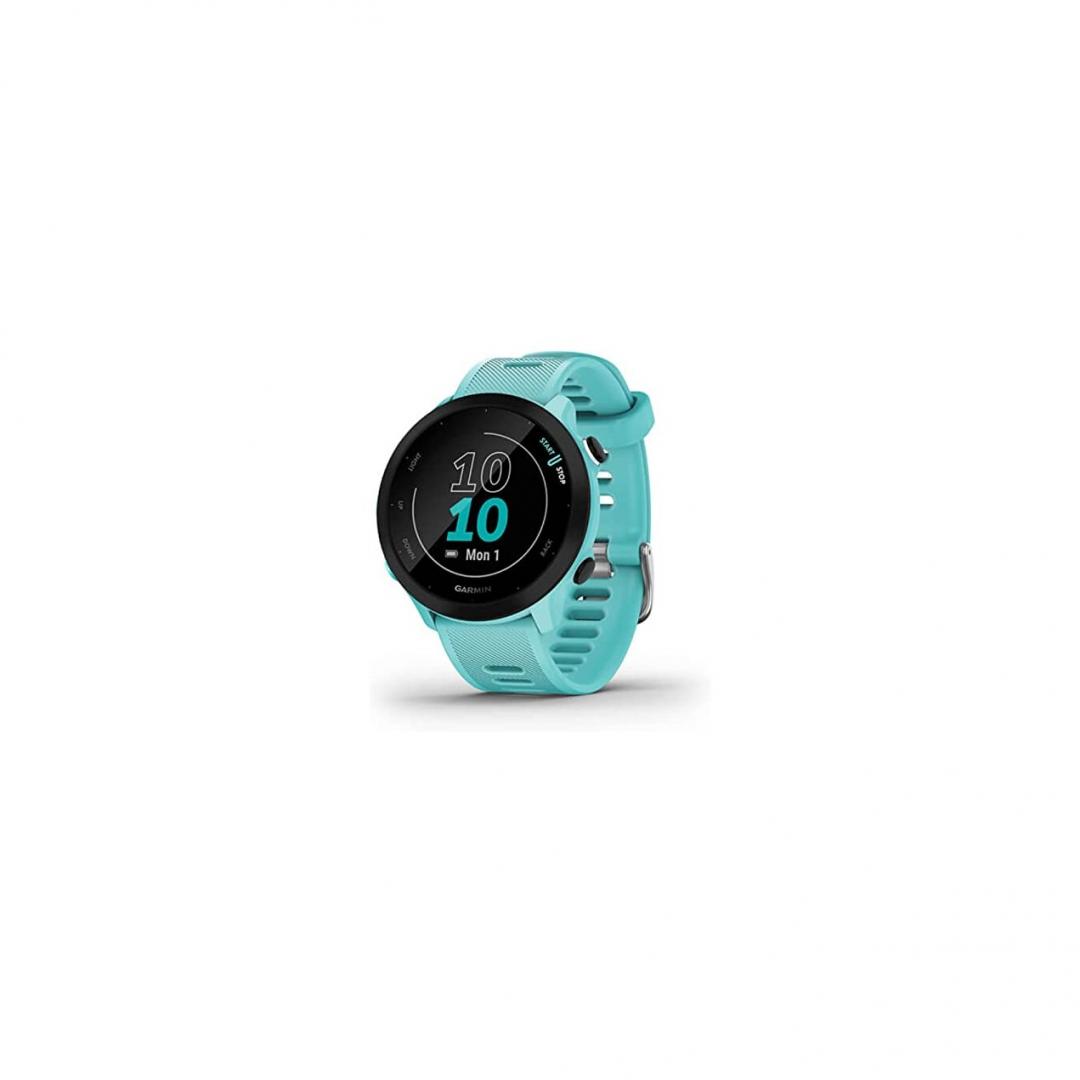

Update: March 2023: This Garmin Forerunner 55 review has been updated with the latest pricing details.
What you need to know about the Garmin Forerunner 55
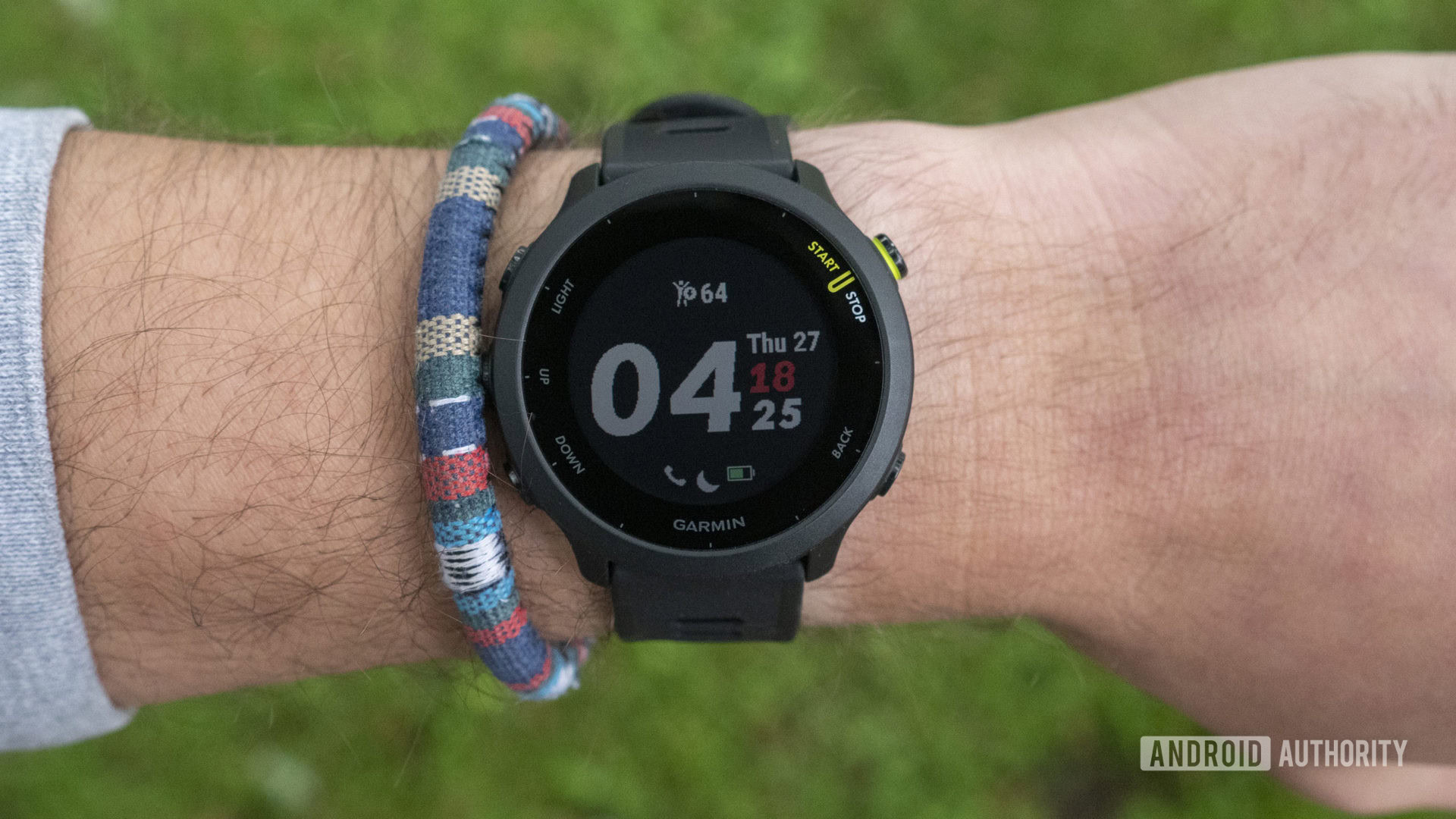
- Garmin Forerunner 55: $199/£179/€199
The Garmin Forerunner 55 is a lightweight running watch made for people new to the sport and those who don’t want to spend an arm and a leg. The Forerunner 55 is the cheapest running watch in Garmin’s ecosystem, not including previous-gen devices.
The Forerunner 55 splits the difference between the Forerunner 45 and the mid-range Forerunner 245. It borrows some design elements and training features from higher-end running watches while also keeping the price down to $200. All of the Forerunner 55’s new features aren’t technically “new,” but this marks the first time they’re coming to the company’s lowest-end running watch.
The watch is available for $199.99 in the US, £179 in the UK, €199 in the EU, and Rs 20,990 in India. You can pick it up in Black, White, or Aqua colorways.
Garmin Forerunner 55 vs 45: What’s new?
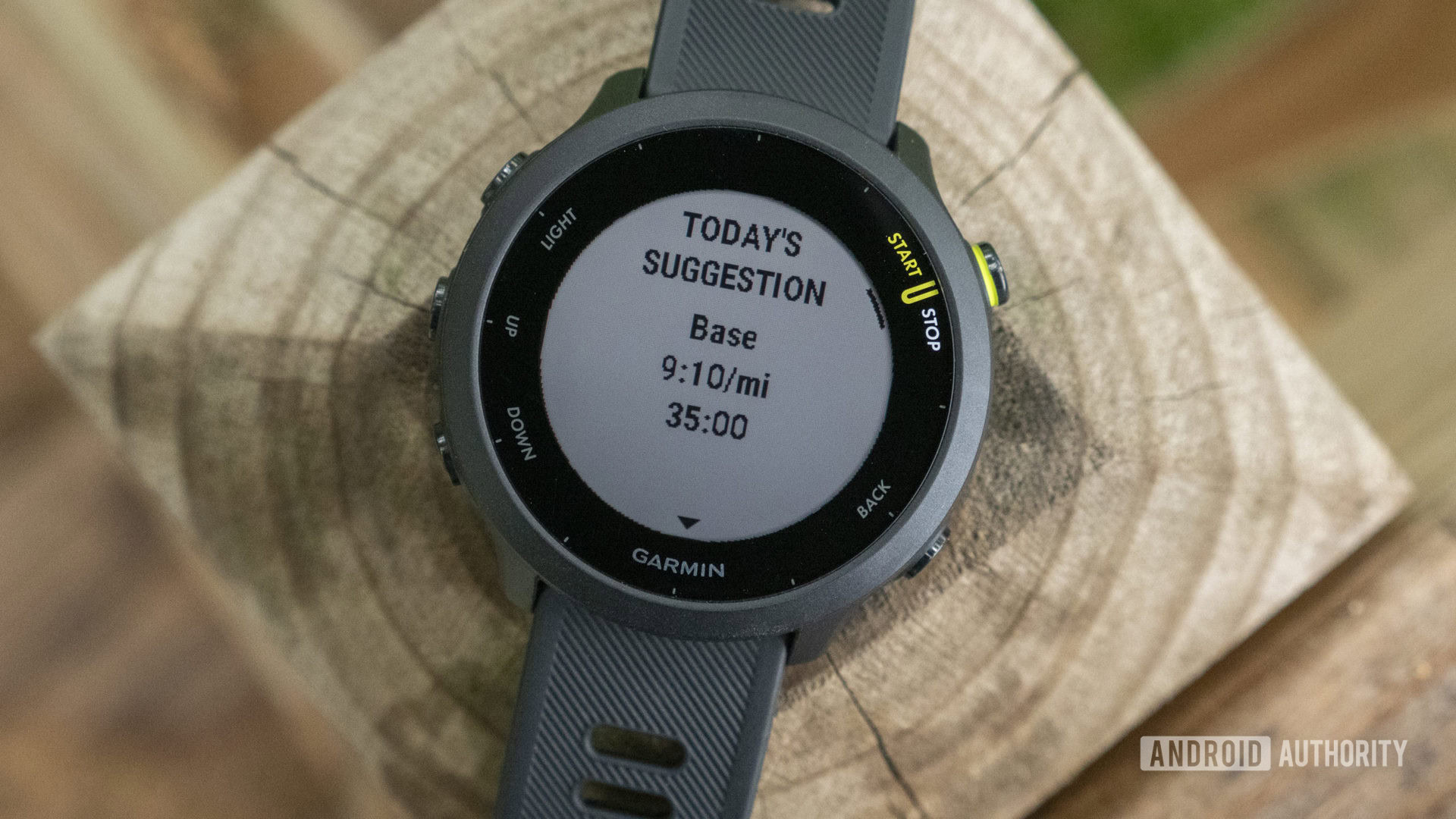
The Garmin Forerunner 45 was an all-around solid running watch, but the Forerunner 55 improves it in a few key ways. Here are all the new Forerunner 55 features you won’t find on the Forerunner 45:
- New design: The Forerunner 55 resembles the Forerunner 245. It’s not a 1:1 match, but the similarities are abundant. The Forerunner 55 has an all-plastic case and support for quick-release straps, unlike the Forerunner 45, whose straps could only be removed using a screwdriver.
- Improved battery life: The Forerunner 45 could last up to seven days in smartwatch mode or 13 hours with the GPS activated. The Forerunner 55 more than doubles that. It can last up to two weeks in smartwatch mode or up to 20 hours in GPS mode.
- PacePro: Garmin’s PacePro feature allows you to keep up with your desired pace, even if your course has elevation changes that could normally throw off your numbers.
- Race Predictor: A feature found on mid- to high-end running watches, the Forerunner 55 comes with Garmin’s Race Predictor estimates. The watch uses your VO2 max and training history to predict your finishing times for 5Ks, 10Ks, half marathons, and full marathons.
- Cadence alerts: Garmin added cadence alerts to the Forerunner 55’s running profile. This is an improvement over the Forerunner 45, which had pace alerts but not cadence alerts.
- Daily suggested workouts: Each day, your Forerunner 55 will recommend a workout based on the following factors: training status, training load, load focus, VO2 max, recovery time, sleep data, and recently completed workouts. Suggested workouts are meant to challenge you and help you maintain or improve your current fitness level.
- Recovery Advisor: After you complete an activity, the Forerunner 55 will estimate how long you should take to recover. Recovery times are suggested based on the training effect of the workout you just completed, as well as the amount of recovery time you have left at the beginning of your next activity.
- New sport profiles: The Forerunner 55 gains a few much-requested sport profiles over the 45, including pool swimming, Pilates, HIIT, virtual running, and track running.
- Improved Body Battery: While the Forerunner 45 series came with Garmin’s Body Battery feature, the Forerunner 55 offers the improved algorithm that first appeared on the Garmin Venu 2. You can read more about the feature in our Venu 2 review, but know that it will now be more difficult to achieve a Body Battery score of 100.
- New health-tracking features: The Forerunner 55 can now track your respiration rate during the day and overnight. It also now features Garmin’s menstrual cycle and pregnancy tracking, relaxation reminders when you’re stressed, and hydration tracking.
Those are all the new features available on the Forerunner 55. We asked Garmin at the time of review to clarify which, if any, of these features will be ported to the Forerunner 45 series, but the company said it’s still figuring that out.
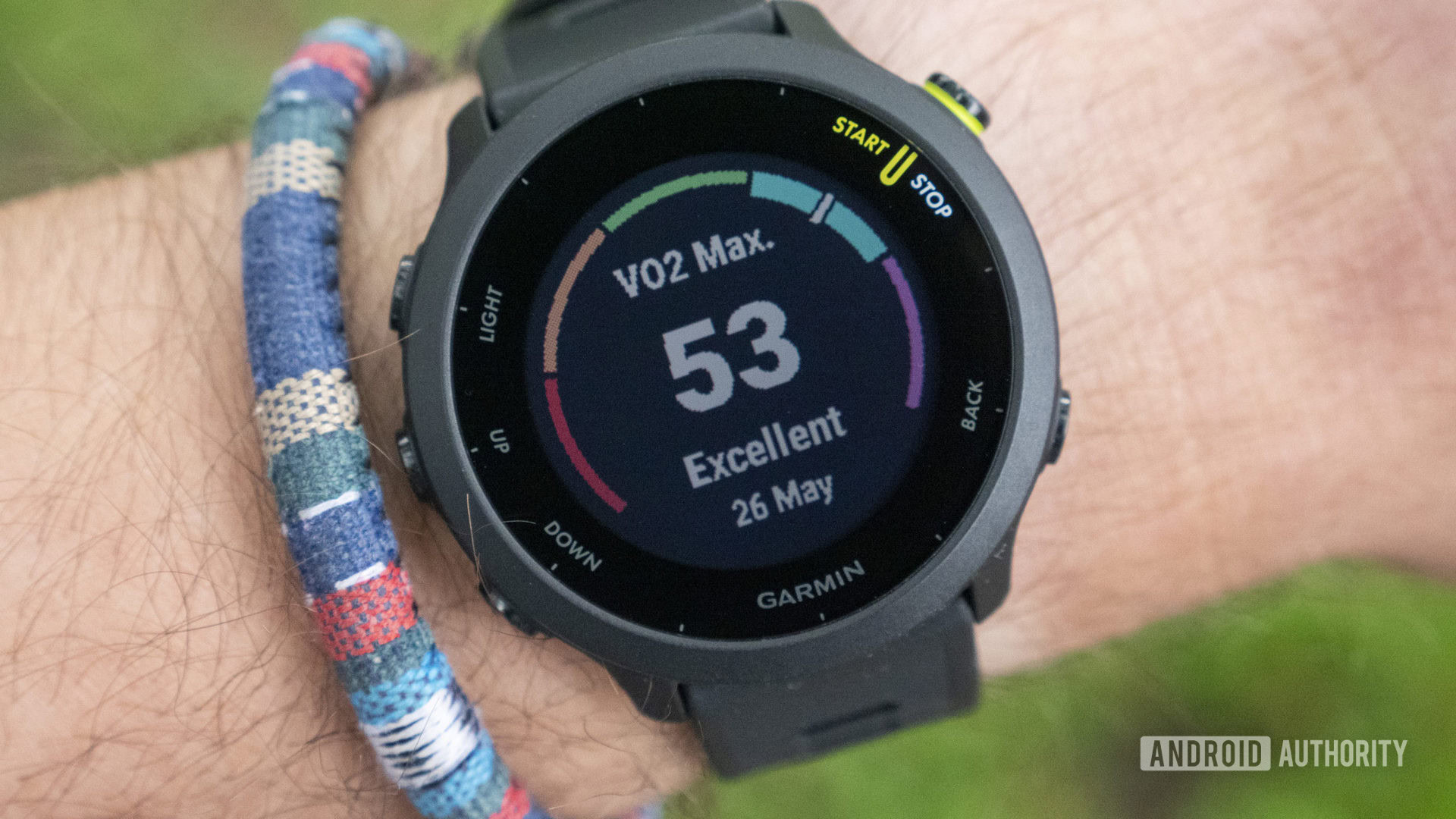
The following features have been carried over from the Forerunner 45:
- Tracks total time, distance, speed, pace, and heart rate during workouts
- Tracks steps, calories, intensity minutes, and sleep
- Standalone GPS
- Garmin Elevate heart rate sensor (same sensor as the Forerunner 45)
- Post-run analytics from Firstbeat
- Stress tracking
- Workout programs with Garmin Coach
- VO2 max estimates
- Location tracking with LiveTrack
- Assistance feature to send automated messages to emergency contacts in the event of an emergency
- Smartwatch features including smartphone notifications, on-device weather, and compatibility with Connect IQ
How’s the new design?
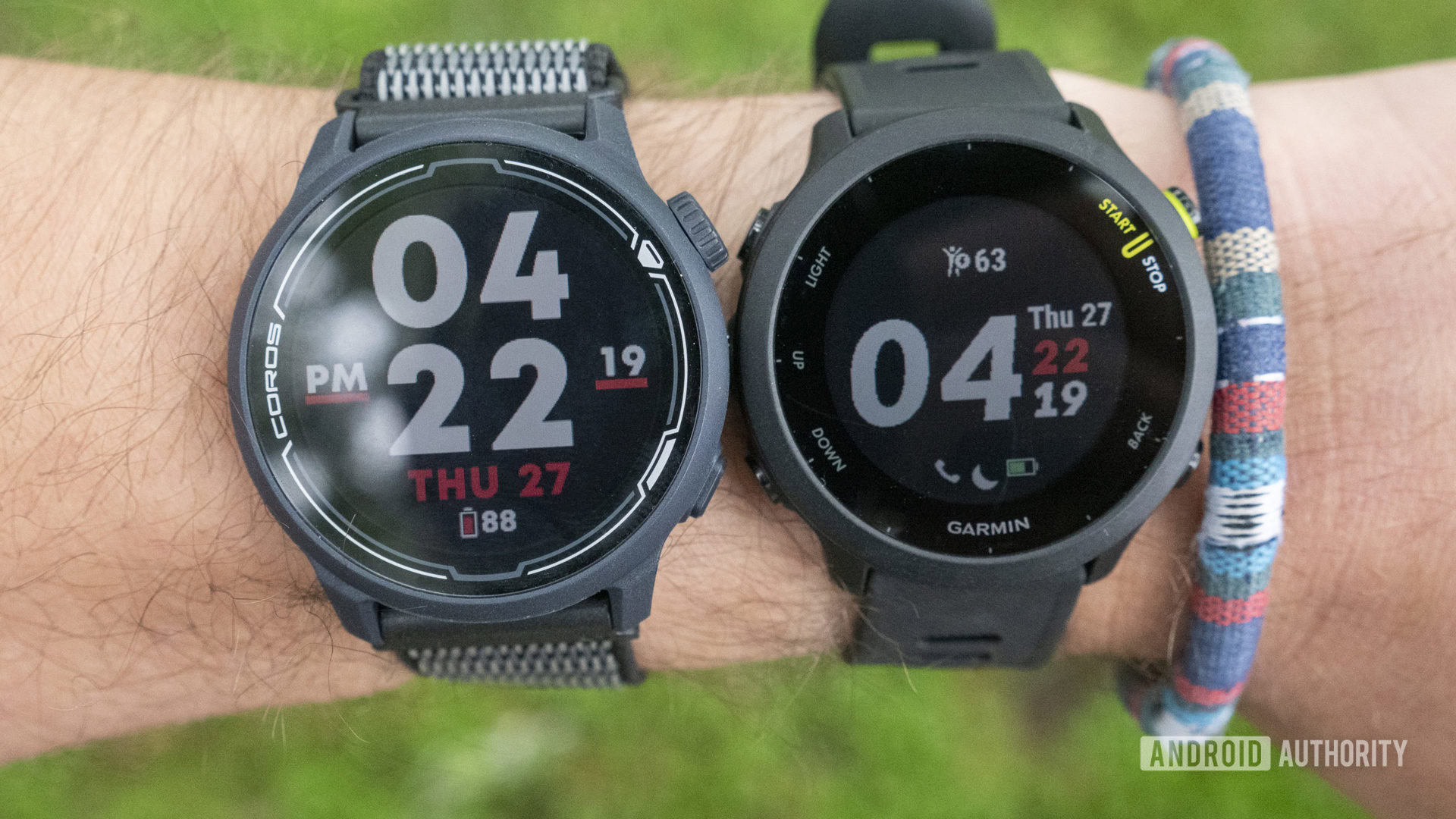
The new design is one of the best parts of the Garmin Forerunner 55. It’s nothing revolutionary — it essentially has the same design as all other modern Forerunners — but it adds to the device’s longevity and ease of use. The Forerunner 45 series’ straps were proprietary and could only be removed with a screwdriver, limiting how easily users could swap them out.
You can swap out the Forerunner 55’s straps for any standard 20mm watch straps, and you might want to consider doing so. They don’t feel nearly as high-quality as what you’d find on the Forerunner 245 or Venu series.
Since the Forerunner 55 doesn’t have a touchscreen, all device navigation is done through the five physical buttons around the case. The buttons feel satisfyingly clicky and are easier to press than the buttons on my Forerunner 245 Music.
The display is fine. It’s a standard Forerunner display that shows up well in direct sunlight. It’s small and has a fairly low resolution. I wish Garmin bumped up the resolution this time around — every watch face is almost distractingly pixelated. However, because the watch is so small, the Forerunner 55 will be well-suited for small wrists.
Battery life has been great in my experience. Garmin claims the Forerunner 55 can last up to two weeks on a single charge in “smartwatch mode” (i.e., not using many battery-draining features like GPS). I haven’t had the device for two weeks, but I’m on track to get a little less than that, maybe 12-13 days. That’s pretty good, considering I’ve charged the watch once and have completed multiple GPS-enabled exercises each week.
Fitness and health tracking
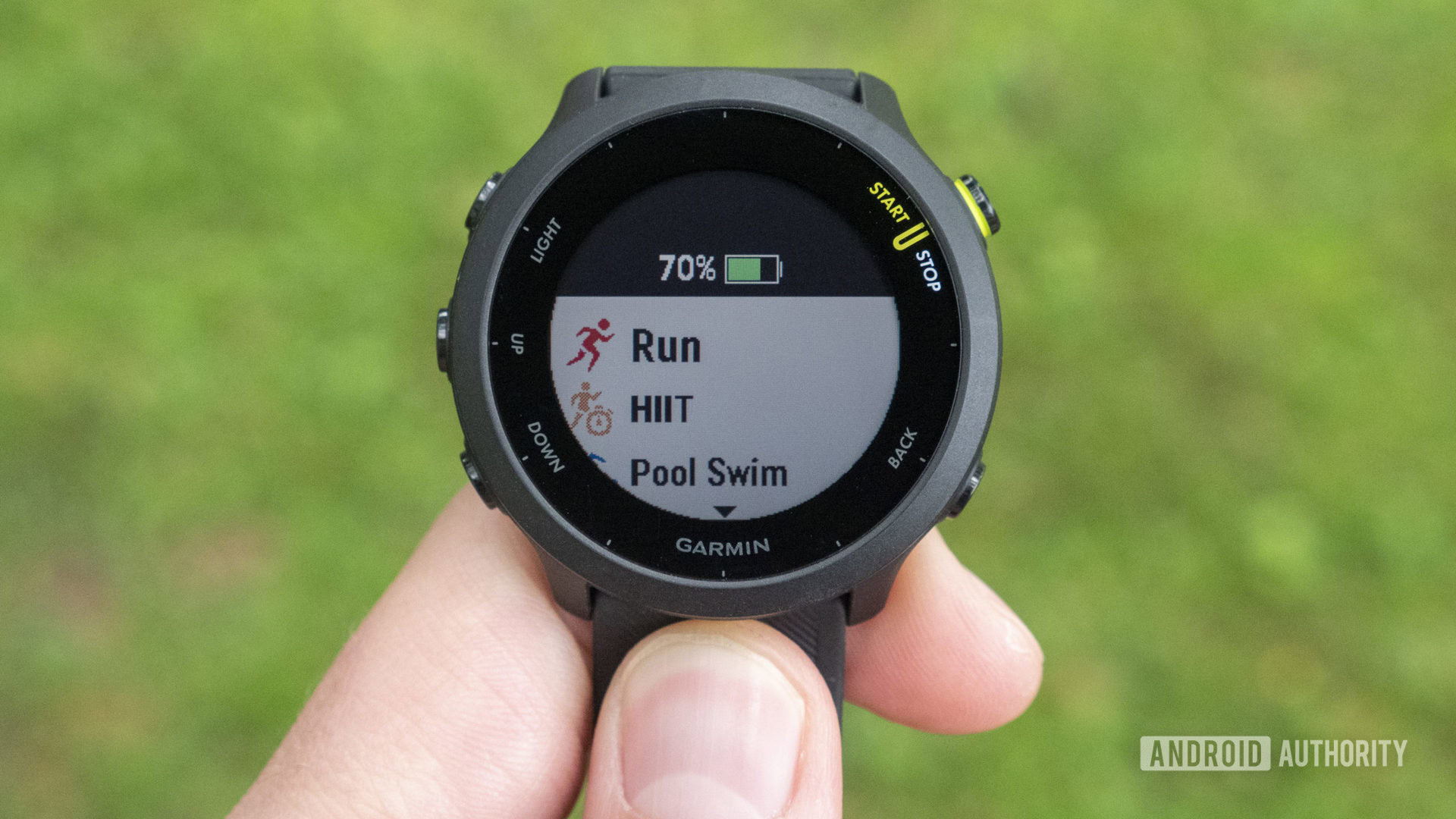
The Garmin Forerunner 55 isn’t just for running; it can track other sports, too: outdoor running, treadmill, indoor track, indoor and outdoor cycling, indoor and outdoor walking, cardio, yoga, elliptical, stair stepper, breathwork, and a generic “other” category, in addition to the new activities previously listed.
The new HIIT profile works just like it does on the Venu 2, allowing you to choose between four timed workouts: AMRAP, EMOM, Tabata, and custom. There’s also a free mode if you’d like to keep tabs on your overall data.
I compared the Forerunner 55 against the Coros Pace 2 and Fitbit Sense for all-day activity tracking, and the new Garmin watch held up compared to the other devices. Step counts and calorie burn numbers were nearly spot-on with the Pace 2.
But what we’re really here for is its running performance. Garmin chose to use its previous-gen Elevate heart rate sensor in the Forerunner 55 instead of the new one that debuted on the Venu 2. It doesn’t look like that should be an issue, though.

You’ll see a 3.3-mile run with the Forerunner 55 (purple) and the Coros Pace 2 (blue) in the screenshot above. I came away completely impressed by the Forerunner’s performance. It managed to stay spot-on with the Pace 2 throughout the entire run, even matching it in major peaks and valleys.
The Forerunner 55’s performance (purple) was also impressive compared to the Polar H10 (orange) and Apple Watch Series 6 (blue) during a 4.2-mile run, which you can see below.

Again, the Forerunner 55 performed well against the Apple Watch and Polar H10. There were hardly any significant variations between the three, though things did get slightly off during the two rest periods at the 19- and 29-minute marks. Notably, the Forerunner 55 does not report heart rate data as often as the Apple Watch and Polar H10.
All in all, I’d say the Forerunner 55’s heart rate sensor is a winner. It’s perfectly capable of tracking major heart rate trends and is able to compete with the best wrist-based sensors out there. Of course, you’ll always get more accurate data with a heart rate chest strap.
The Forerunner 55's heart rate sensor is a winner.
GPS performance is impressive, too. Take a look at the screenshot below to see the 3.3-mile run with the Forerunner (purple), Pace 2 (blue), and Fitbit Sense (orange).
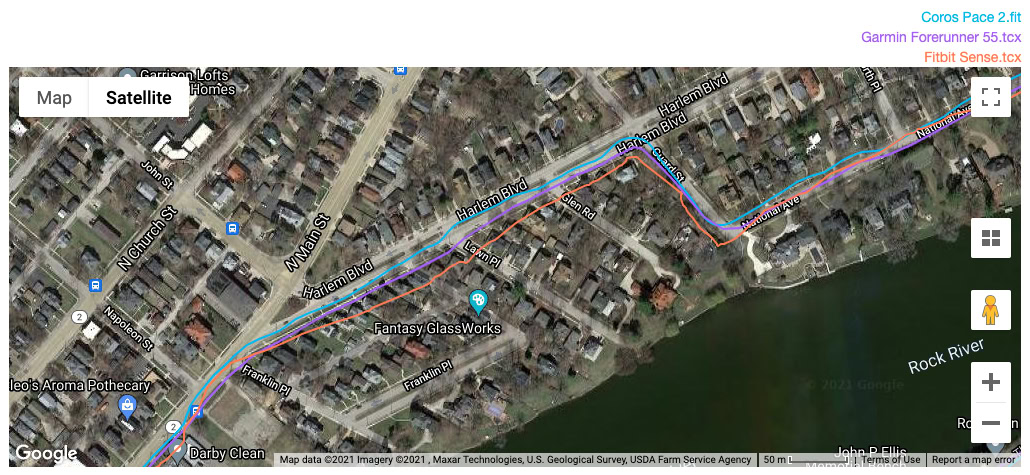
The Forerunner 55 stuck to my route almost exactly. There are a few moments where the Forerunner drifted off into the houses on the side of the street, but all in all, it was the closest to the route I took. On the same street, the Coros Pace 2 had me running on the other side of the street, about four lanes of traffic over from where I actually was. The Pace 2’s data was far better than the Fitbit Sense’s, which, well, speaks for itself.
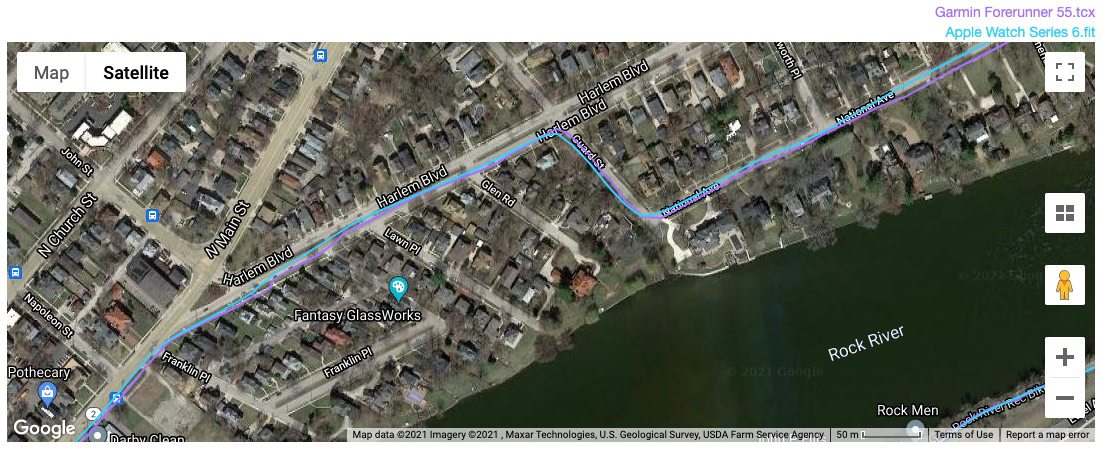
I ran the same route on another day with the Forerunner 55 (purple) and Apple Watch Series 6 (blue), which you can see above. It was cloudier this day, but both devices expectedly performed well. I’ll give the win to the Apple Watch in this case, as it was able to stick to the exact side of the road I was on nearly the entire time. The Forerunner 55 was no slouch either.
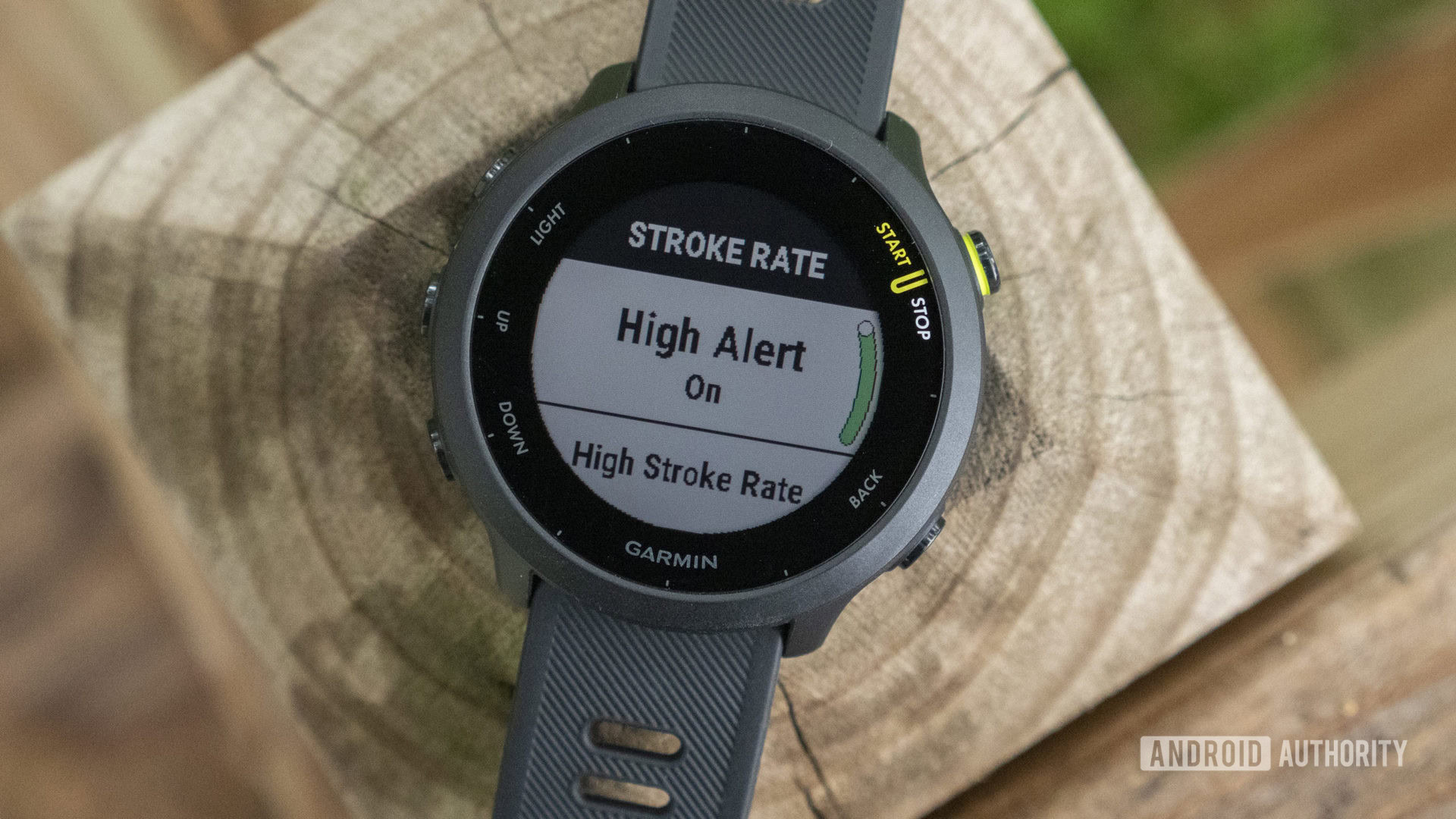
While we’re on the subject of running, now is as good of a time as ever to bring up all the new training features. I set up the same cadence alerts on the Forerunner 55 and Coros Pace 2, and both devices notified me when I dipped below my threshold of 170 SPM. Also, I’ve said this before, and I’ll say it again, Garmin’s Recovery Advisor is one of the most useful training features the company offers. It can be a little off in certain cases, but I find its recovery estimates to be quite accurate most of the time.
The Forerunner 55 should track sleep about as well as other recent Garmin devices, though I have run into one issue that I haven’t seen on other Garmins. Overall, the watch tracked my sleep stages fairly accurately compared to the Fitbit Sense and Google Nest Hub (2nd gen). However, on multiple nights, the Forerunner could not pick up on my wake times during the night. The Sense and Nest Hub both reported over 40 minutes of waking up on one night, while the Forerunner only caught seven of those minutes. This has happened multiple times throughout the testing period.
Garmin Forerunner 55 specs
| Garmin Forerunner 55 | |
|---|---|
Display | 1.04-inch transflective memory-in-pixel (MIP) display 208 x 208 resolution |
Dimensions and weight | 42 x 42 x 11.6mm Fits wrists with a circumference of 126-203mm 20mm removable straps 37g |
Build materials | Plastic case Silicone band |
Battery | Up to 2 weeks in smartwatch mode Up to 20 hours in GPS mode |
IP rating | 5ATM |
Sensors | Garmin Elevate heart rate sensor GPS GLONASS Galileo Accelerometer |
Connectivity | Bluetooth |
Storage | No on-device music storage Stores 200 hours of activity data |
Compatibility | Android, iOS |
Garmin Pay | No |
Smartwatch features | Connect IQ-compatible Smartphone notifications Controls smartphone music Garmin Assistance safety features |
Colors | Black, White, Aqua |
Value and competition


As mentioned, Garmin has lots of competition in the ~$200 running watch space.
The Coros Pace 2 () is gunning for Garmin’s cheap running watch lineup, and there are a few reasons to buy it over the Forerunner 55. First and foremost, the Pace 2 supports onboard running power metrics, which is just about unheard of for a cheap device that doesn’t need an auxiliary pod. Coros also recently debuted its EvoLab software — basically its rival to Firstbeat analytics — meaning the Pace 2 will soon offer Garmin-like training features.
However, the Forerunner 55 boasts Garmin’s wide range of health metrics, better smartwatch features, and more detailed sleep tracking than Coros’ offering. Right now, I can’t tell you whether to buy the Forerunner 55 over the Coros Pace 2, though I can say Garmin’s watch is far more polished than the Coros watch.
If you’re craving a few more features and are willing to spend a little more, the Garmin Forerunner 245 Music ($200 at Amazon) is a good bet. Now that the Forerunner 255 ($304.99 at Amazon) is out, you can often find the 245 Music deeply discounted on the likes of Amazon. You’ll get the same base features of the Forerunner 55 but with additional built-in music capabilities and a better screen.
Those who are getting into running should also check out the HUAWEI Watch GT 2e ($425 at Amazon). It costs a little less than the Forerunner 55 and offers Firstbeat analytics for runners. The HUAWEI Health app isn’t nearly as feature-rich as Garmin Connect, but it’s a fine option for new athletes.
If you’re after a better smartwatch experience, the Apple Watch SE (2022) ($269.99 at Amazon) should also be considered. It costs $50 more than the Forerunner 55, and offers many of the fitness features the Series 8 offers, but at a fraction of the price. It’s a solid fitness watch — especially for GPS and heart rate tracking — but the battery will only last you about a day.
Garmin Forerunner 55 review: The verdict
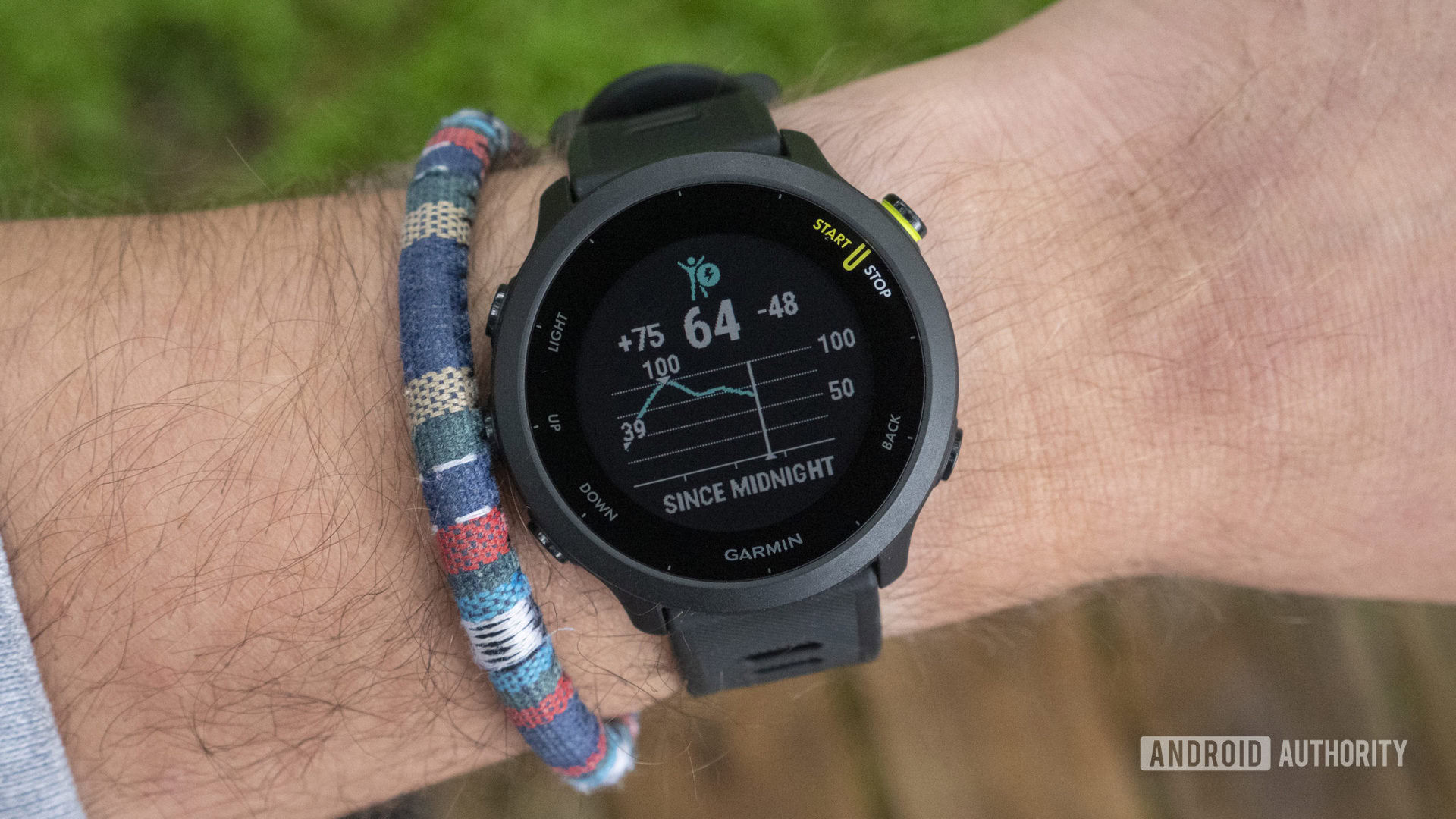
I’m not surprised that I like the Garmin Forerunner 55 so much. It improves on the Forerunner 45 line in nearly every way, from design to battery life to health and training features. And it does all of that without costing any more than the Forerunner 45 line. Garmin could have easily charged $50 more for this watch considering these improvements. Of course, then it’d be creeping into Apple Watch SE territory and jeopardizing its Forerunner 245 line while being priced above the Coros Pace 2.
The Garmin Forerunner 55 is one of the most well-rounded running watches, even though it's only $200.
Competition helps the tech industry thrive. Consumers get better products when companies are vying for those hard-earned dollars. With Coros hitting the ball out of the park at this price point and Apple offering its uber-popular smartwatch for under $300, I think Garmin will have to be on its toes for the next few years. And that means we’ll see even more high-end features come to affordable devices. It really is good for the consumer.
On its own, though, the Garmin Forerunner 55 is one of the most well-rounded running watches I’ve used, and again, it achieves this at $200. You can’t argue with that.
Thank you for being part of our community. Read our Comment Policy before posting.